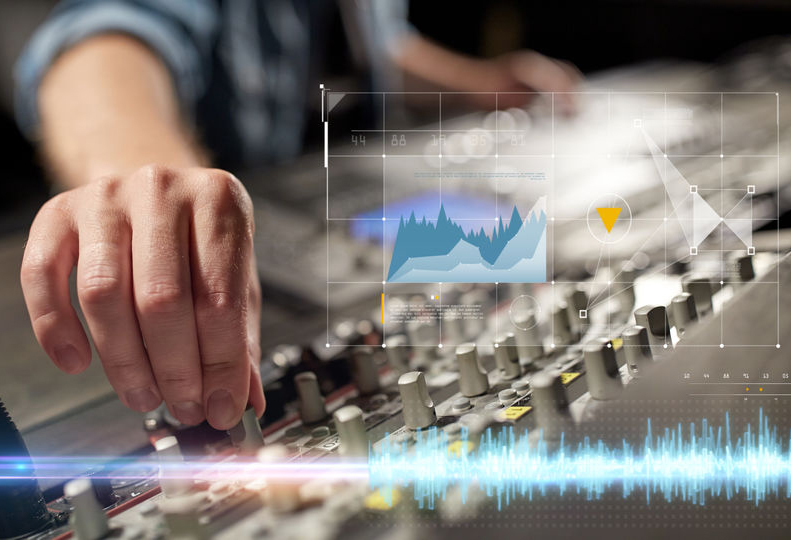
Jeremy Grodhaus: The first thing that comes to mind is dynamic EQ and multiband compressors. I used the Waves C6 quite a bit on the Avid platform and have really enjoyed the onboard versions with DiGiCo and Allen & Heath dLive. I find that just as a vocalist or an instrument is dynamic in volume, it can be as well in tone. These tools allow for a more gentle and expressive tonal adjustment to the source without having to get too aggressive with static signal processing – proximity effects and de-essing on vocals, expressive organ parts, nuanced snare drum technique, and various speakers at corporate events all come to mind.
Another important tool for me is utilizing group processing with the idea of many into few and few into two. In other words, many channels to a few groups and a few groups to the master bus. At each level are EQs and compressors. Generally, I’m more aggressive at the channel level and progressively less so in the subsequent stages. This makes tonal and dynamic management of the mix much more efficient. Once the mix is built, I can effectively run the show on about eight faders. As I’m listening to the overall mix, I can make broader mix decisions without getting in the weeds.
For instance, I may find a lot of low-mid buildup in the mix; I can carve the drums, bass, guitars, keys, and background’s around each other at the group level much faster than diving into every channel. Likewise, I may want to process just “the mix” and will go for global master bus adjustments.
Also, summing all my FX returns and processing them as a group can be very helpful. A little compression gluing the reverb and delays can help the FX show up in an otherwise dense mix without being overly loud or disconnected. This signal flow allows for driving several compressors dynamically for tone as opposed to just strapping one on for dynamic control only.
Processing the PA happens on the other side of the master bus with matrices. Ideally we should be able to pull a recording off of the master bus and sound decent. System processors handle the broad room and PA component duties (phase alignment, delays, etc.).
In between the two are matrices to manage the dynamic changes in the space. Is the room full or empty, how’s the stage volume, what’s the relative humidity? Those parameters change daily and between sound check and show. It’s subtle, but you can analyze if it’s the room or the mix that needs processing and decide which side of the master bus you want to deal with.
One other trick I like is strapping an aggressive compressor on any cymbal channel and inserting a narrow-ish high-mid bandwidth sidechain on the detector circuit. Most of the time it doesn’t do anything, but if the cymbals are really being thrashed, the comp will kick in and soften the brashness on harder parts of a song.
Eddie Caipo: I always like broad strokes for the tonal aspect or color of the mix, unless, of course, narrow filters are needed to correct something. But for the most part I have bus processing with EQ, compressor, imagers and a limiter. When mixing FOH or IEMs, having a certain tone or color allows me to use less EQ or processing on the individual channels.
My favorite bus plugins are for compression – Shadow Hills or SSL bus compressor for imaging and EQ, Brainworks Digital V3 (because it has a M/S EQ and is very transparent) and/or Pultec EQP-1A. And at the end, always the faithful McDSP ML4000 for limiting and some very light multiband on trouble frequencies (if needed). My go-tos for inputs are Waves SSL E-Channel and C6, along with Empirical Labs Arouser.
Samantha Potter: My process for DSP is always this: as simple as possible to get the best result. I don’t like signals “dripping” in my own processing. When it comes to more avant-garde shows I’m willing to get a little creative but as a hard rule I try to use as little as I can.
For dynamics, parallel compression is a fun trick I implement for kick drums when there’s enough processing available. Balance between channels and some corrective EQ goes a lot further than people think. Boutique plugins are a lot of fun but aren’t necessary for most occasions.
When it comes to effects, I keep the FX master faders by my right hand and ride them to add depth and control to vocals and certain instruments. I’ve found that they can be helpful in creating so much harmony and chorus without the echo if you follow the phrases in the music. A blend of reverb and delay is markedly better than each on their own. The control of the delay and the lack of control in the reverb can sing wonderfully when they’re under my right hand.
